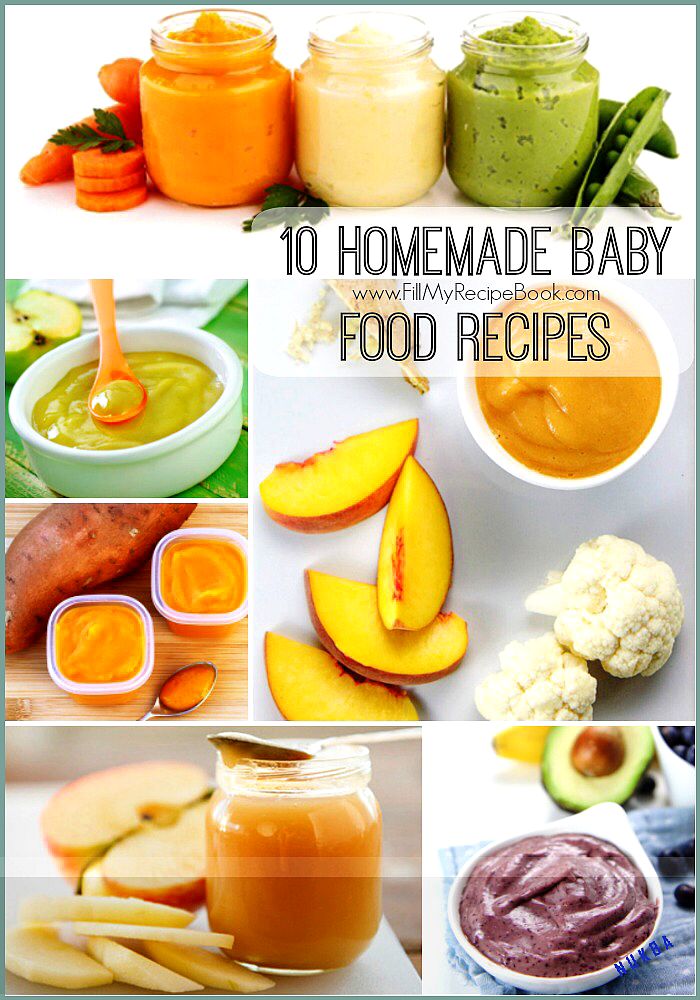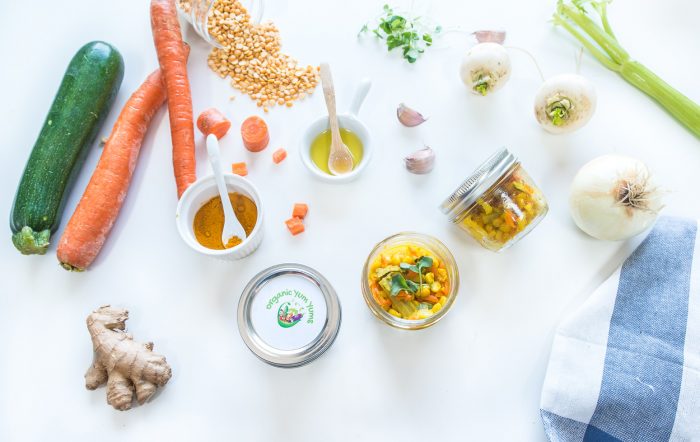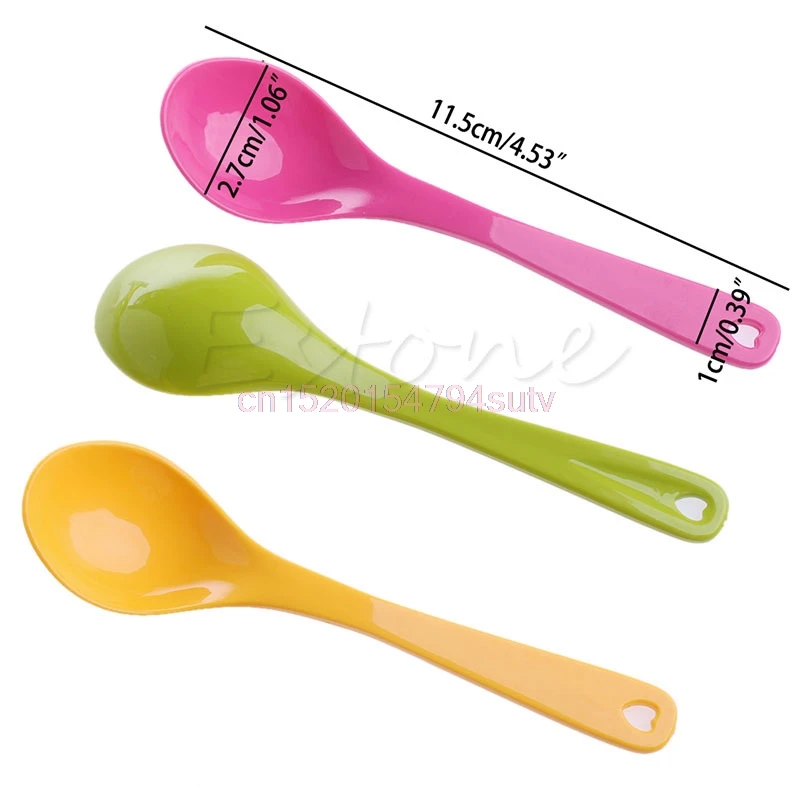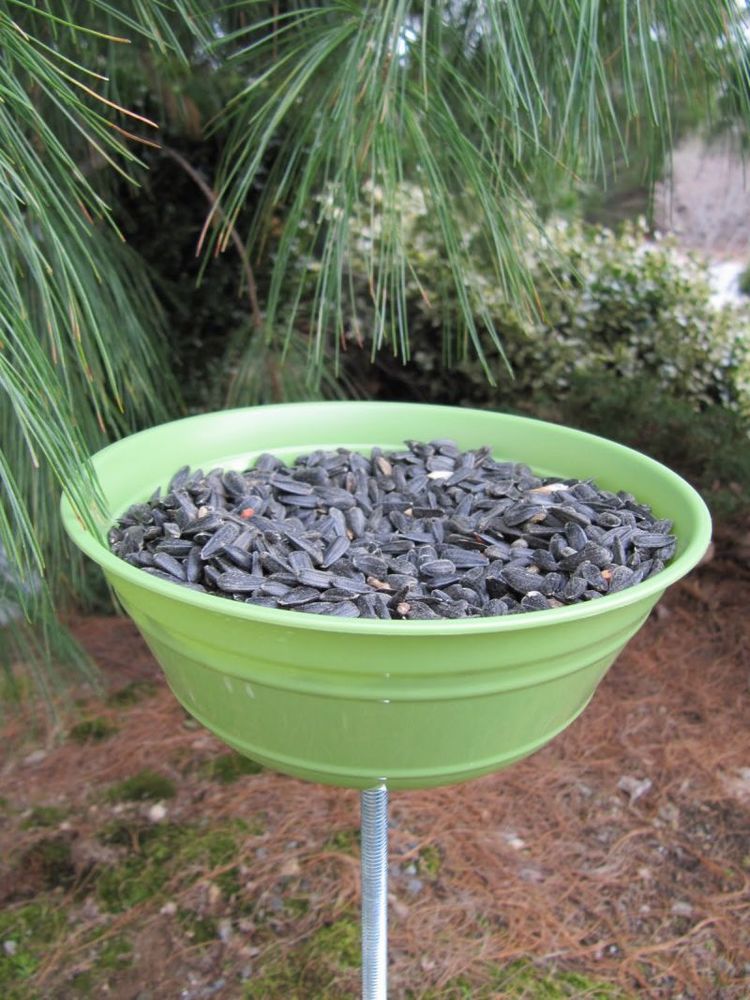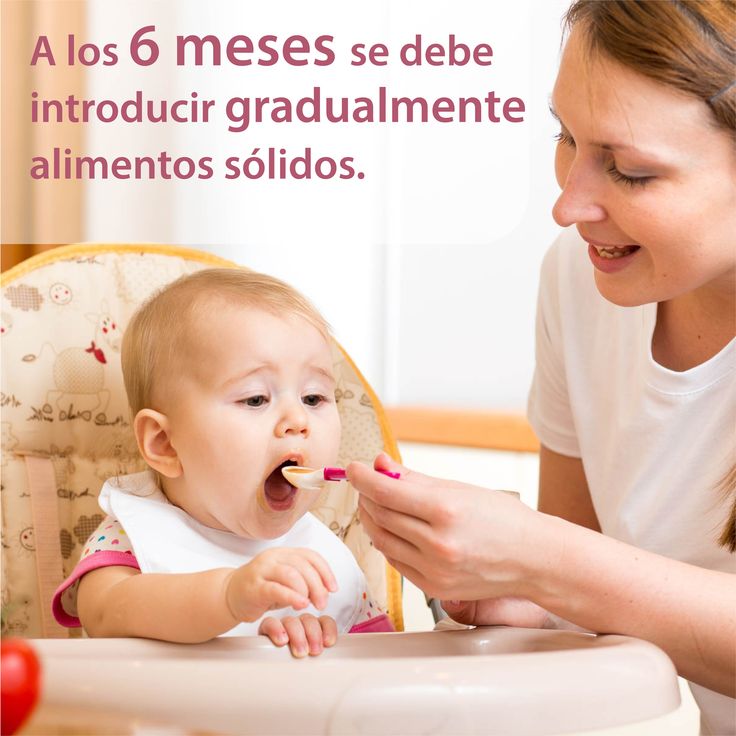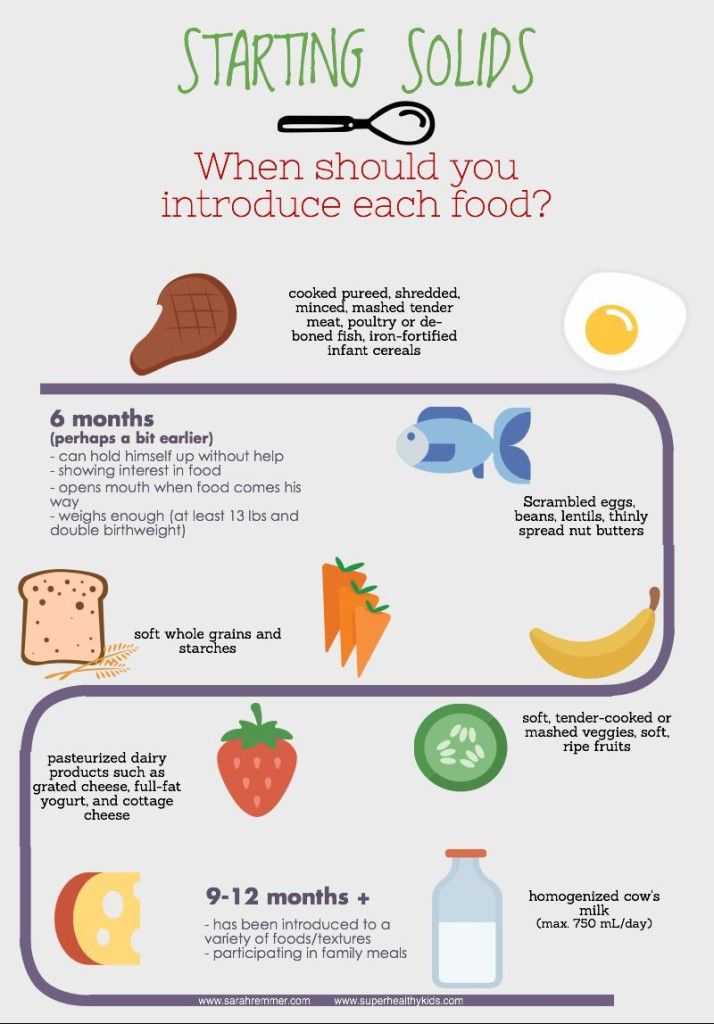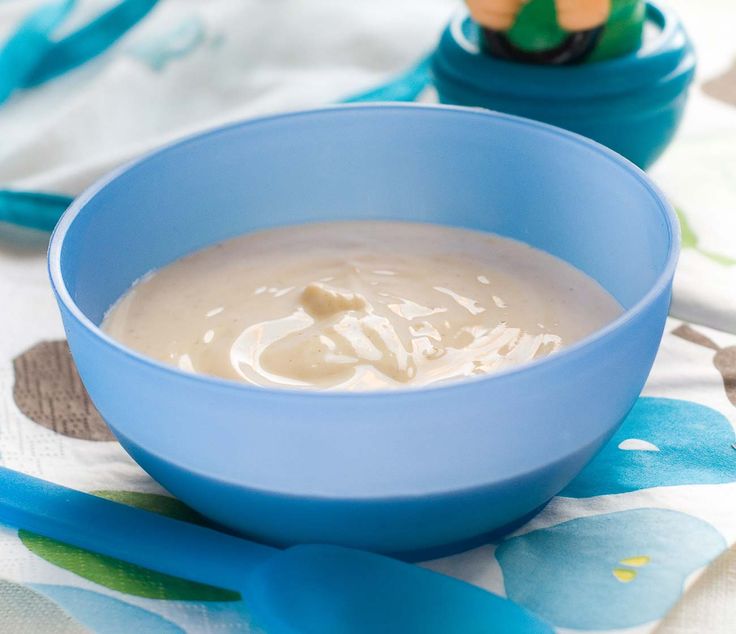Homemade baby food list
10 Easy Homemade Baby Food Ideas (No-Cook, Super Fast, Stage 1)
Learn how to make the EASIEST homemade baby food recipes (stage 1) for your little one with these super simple no-cook ideas. Plus: I have the best tips for making them ahead and freezing them so you can batch cook and simplify your days!
Homemade Baby Food
As a mom to three kids, I know firsthand how the urge to make homemade baby food can be both exciting and a little daunting. And if you have a busy schedule or other kids in the house, finding the time to actually do it can seem impossible. But, there are so many healthy foods that you can transform into stage 1 baby food purees with hardly any work or special equipment at all!
TIP: I use a regular blender for all of these recipes, so you don’t need to buy a special baby food maker unless you want to.
Baby Food Recipes for 6, 7, and 8 Month Old Babies
These homemade baby food ideas are designed for younger babies who are still eating thinner purees, but you can of course use them for older babies and toddlers too. Each can be served as is, or you can combine more than one together to create new flavors if you’re feeling creative!
TIP: If you want to add fat or protein to any of these fruit or veggie purees, simply stir in a little whole milk yogurt, coconut cream, or Avocado Puree.
Best Way to Make Baby Food
I’ve found that the easiest and most approachable way to make baby food is to simply use a blender. With fresh ingredients and a little water, breastmilk, or formula to thin it as needed, you can easily make your baby meals without investing in equipment you may not use very long.
TIP: You’ll want to start with at least 1 cup of any base ingredient to ensure that there’s enough in the blender to fully blend up.
Tools You Need to Make Homemade Baby Food
To make these baby food recipes you’ll need:
- Blender (you could also use an immersion blender if yours is very strong)
- Water, formula, or breastmilk to thin as needed
- Knife for chopping produce
- Spoon
- Bowls
- Ice cube tray
- Freezer bags for storage
- Baby food storage containers
Stage 1 Baby Food
These baby foods are meant for early eaters as they are typically very thin and easy for a baby to move around in their mouths.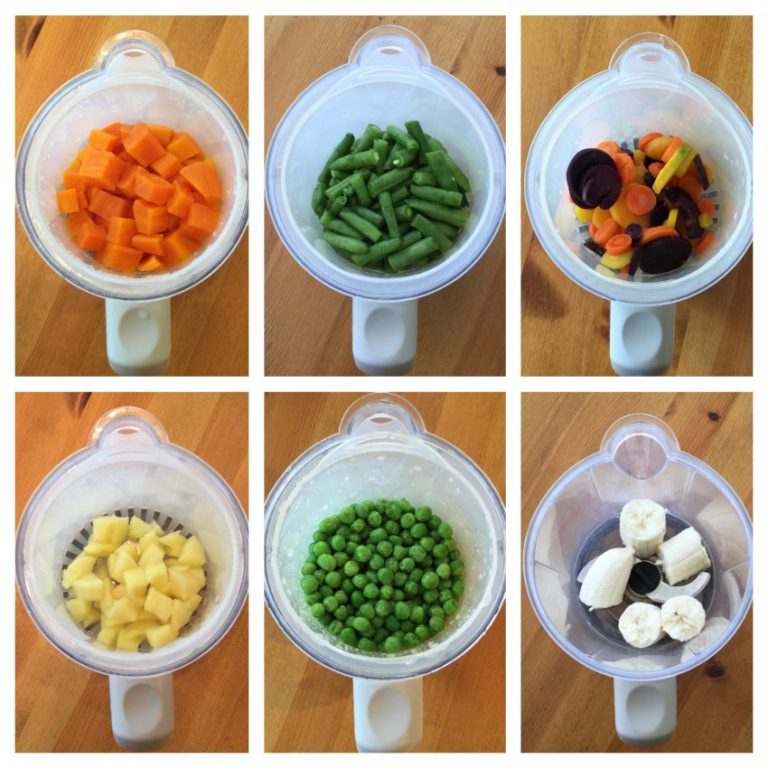 I follow the recommendations to wait until 6 months to start solids, so I personally don’t worry excessively about this distinction as I like babies to experience some texture in their purees. (The ones you find at the store are low allergenic foods and are meant for 4+ months.)
I follow the recommendations to wait until 6 months to start solids, so I personally don’t worry excessively about this distinction as I like babies to experience some texture in their purees. (The ones you find at the store are low allergenic foods and are meant for 4+ months.)
Stage 2 Baby Food
These baby foods are typically a little bit thicker, sometimes include more than one ingredient, and offer a wider variety of ingredients. Most babies are ready for these sorts of purees around 7-8 months, or once they’ve mastered thinner purees. (Again, since I like to do a combined baby feeding approach with both baby led weaning and purees, I don’t worry too much about following the calendar to decide when to introduce these.)
TIP: As a backup to my homemade baby foods, I love the options from Amara Organic Baby Food (paid affiliate link) since you simply need to stir it together with breast milk, formula, or water and it’s ready to serve.
And now, for my ten go-to homemade baby food purees that you don’t even need to cook!
1.
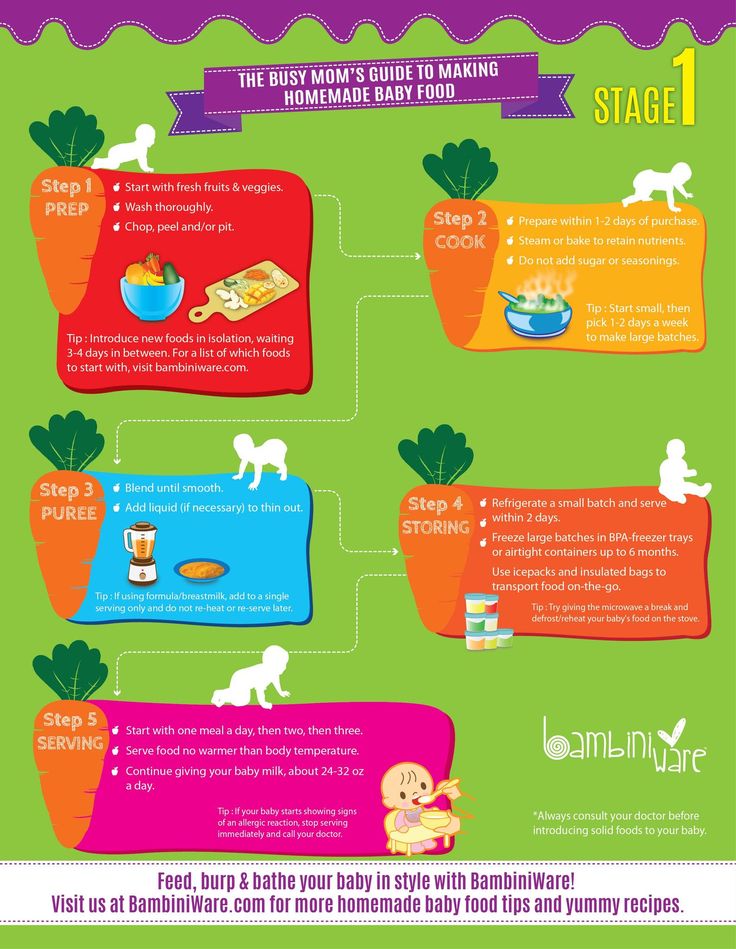 Avocado Puree
Avocado PureeTo make avocado puree for a baby, you just need a fresh avocado, a blender, and some lemon juice if you plan to store it for later. I sometimes even do this with just a fork if the avocado is super soft! It’s a perfect way to introduce a low allergenic food that’s rich in healthy fats.
TIP: Get the full recipe for Avocado Puree here.
2. Bean Puree
Baby’s early foods don’t have to be all one food group and beans are a great food to have in the mix. You can do this easy bean puree with chickpeas, pinto beans, black beans, or even white beans, thinning it as needed with water, formula, or breastmilk. This is a great puree to mix with a little sweet potato or butternut squash.
TIP: Get the full recipe for Bean Puree here.
3. Blueberry Puree
Using fresh or frozen blueberries, this easy berry puree is loaded with fresh flavor and antioxidants. It’s delicious on its own or stirred into plain whole milk yogurt or baby oatmeal. (Note that it thickens up as it sits in the fridge, so you’ll need to stir it well to serve.)
(Note that it thickens up as it sits in the fridge, so you’ll need to stir it well to serve.)
TIP: Get the full recipe for Blueberry Puree here.
4. Kiwi Puree
With a bright flavor, this puree is great for babies who seem to love flavor—and it’s a fun one to make and store for later. You’ll want to make sure that you choose very ripe and sweet kiwi and taste it before you make the puree to ensure that it’s not too tart. (If it seems tart, you can mix with banana or applesauce.)
TIP: Get the full recipe for Kiwi Puree here.
5. Mango Puree
Using fresh or thawed frozen mango, this baby puree blends up in seconds. It’s bright, flavorful, and a great source of immune-boosting vitamins. Taste your mango to be sure that it’s sweet and not too tart. (If it’s tart, you can add Applesauce or ripe Banana Puree.)
TIP: Get the full recipe for Mango Puree here.
6. Peach Puree
Turn fresh or frozen and thawed peach slices into a super smooth Stage 1 baby food with this easy blender method. You’ll want to strain out the skin since it’s hard to blend up smooth, even with a high powered blender, but that’s so easy to do! This baby food recipe is a nice alternative to applesauce.
You’ll want to strain out the skin since it’s hard to blend up smooth, even with a high powered blender, but that’s so easy to do! This baby food recipe is a nice alternative to applesauce.
TIP: Get the full recipe for Peach Puree here.
7. Whipped Peanut Butter
This may not have occurred to you, but whipped peanut butter is a great baby food! This is a perfect way to introduce baby to peanut butter and to offer it safely there after. You just need to stir water into unsweetened creamy peanut butter until it forms a whipped consistency like yogurt. It’s smooth, not too sticky, and packed with protein.
TIP: Get the full scoop on introducing peanuts to baby here.
8. Pineapple Puree
Blend up fresh or frozen pineapple chunks into a tropical baby food puree that’s smooth and creamy. This is yummy on its own or paired with whole milk plain yogurt. Taste your pineapple to ensure that it’s not too tart. (If it’s tart, you can add Applesauce or ripe Banana Puree.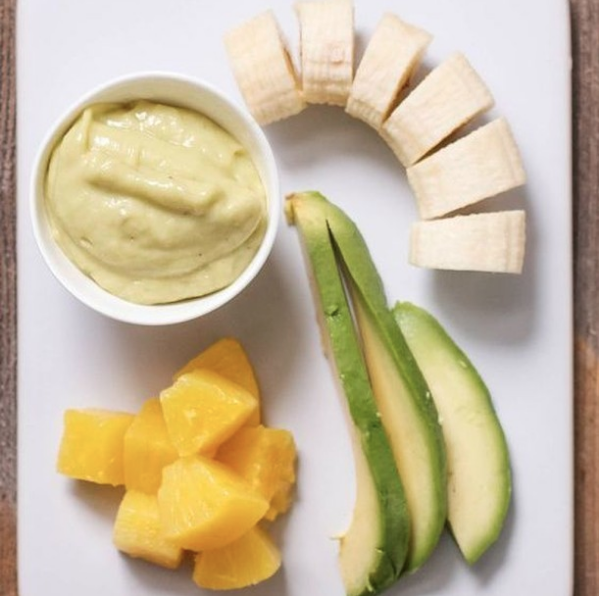 )
)
TIP: Get the full recipe for Pineapple Puree here.
9. Strawberry Puree
Fresh strawberries blend up into a perfectly smooth homemade puree without the need for any additional liquid. You can serve this as is, or mix with applesauce if desired. The flavor of your berries will determine the flavor of your puree, so be sure to taste them for sweetness.
TIP: Get the full recipe for Strawberry Puree here.
10. Banana Puree
Ripe bananas make great homemade baby food with the help of just a blender. This is a super simple baby food to make at home and it’s easy to digest as a Stage 1 baby food. Use ripe bananas with brown spots to ensure that the puree tastes sweet and is easy for baby to digest.
TIP: Get the full recipe for Banana Puree here.
Homemade Baby Food Storage
The easiest way to store homemade baby food is to add fresh purees to an ice cube tray and freeze.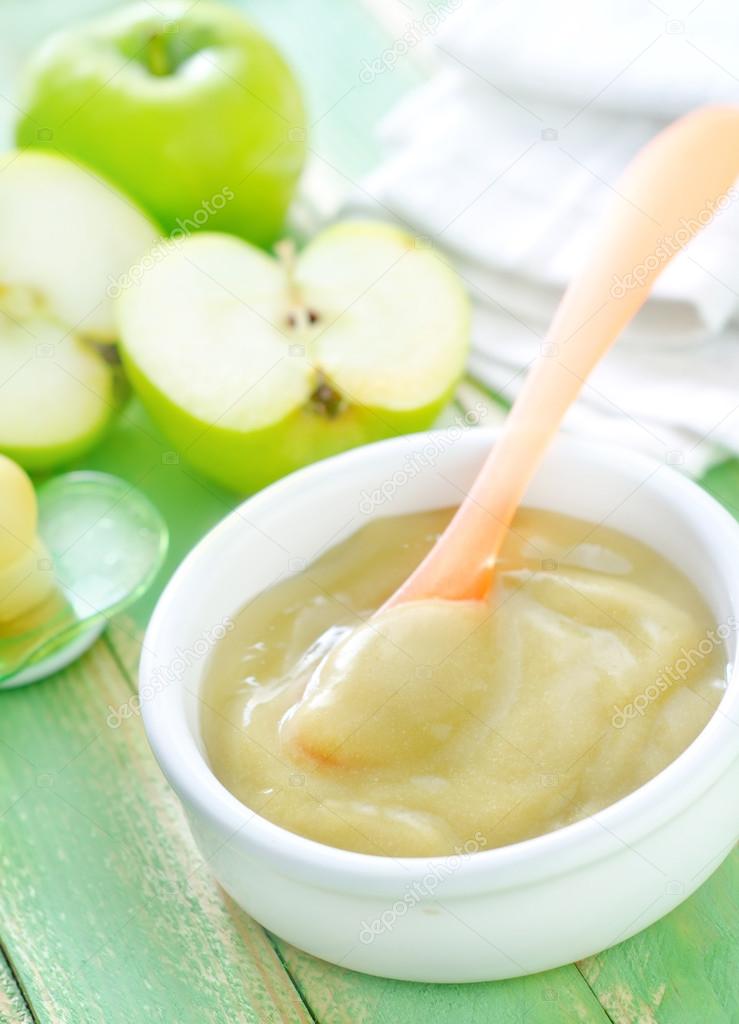 Once frozen, simply pop out the cubes and store in labeled freezer bags for up to 3 months. These are a perfect way to make it easy to send homemade baby food to daycare or to simply get ahead for the coming week.
Once frozen, simply pop out the cubes and store in labeled freezer bags for up to 3 months. These are a perfect way to make it easy to send homemade baby food to daycare or to simply get ahead for the coming week.
TIP: Find more information about storing baby food—including the best small food storage containers—here.
]
Tips for Making the Best Homemade Baby Food
- Use at least 1 cup base ingredient to ensure that a blender has enough volume to blend well.
- Thin any homemade puree with water, formula, or breast milk.
- Freeze any baby food you won’t use within 3 days in an ice cube tray. Transfer frozen cubes into freezer storage bags for up to 3 months. Thaw these frozen baby food recipes in an airtight container in the fridge overnight before you plan to serve.
- Taste all fresh foods for sweetness and to ensure that your puree isn’t too tart. To tame tartness, mix any puree with Banana Puree , Avocado Puree, Applesauce, or Mashed Sweet Potato.

- If you want to add fat or protein to any of these fruit or veggie purees, simply stir in a little whole milk yogurt, coconut cream, or Avocado Puree.
- Use breastmilk or formula in place of the water if desired.
- Mix two purees together for more complex flavors.
- Add texture to any puree by stirring in baby oatmeal or hemp seeds.
- For more details on each of these, find them here: Avocado Puree; Banana Puree, Bean Puree; Blueberry Puree, Kiwi Puree, Mango Puree, Pineapple Puree, Peanut Butter Puree, Peach Puree, Strawberry Puree
I’d love to hear your feedback on this way of making simple baby food, so please comment below. I so appreciate hearing your experience with my recipes!
Prep Time 5 minutes
Cook Time 0 minutes
Total Time 5 minutes
Author Amy Palanjian
Cuisine American
Course Baby Food
Calories 42kcal
Servings 4
- ▢ 1 cup blueberries, diced strawberries, diced peaches (peeled), diced kiwi (peeled), diced pineapple (peeled), diced banana (peeled), diced mango (peeled), diced avocado (peeled), OR beans (rinsed and drained)
- ▢ water, formula, or breast milk (as needed)
Choose one fruit, the avocado, or beans and add to a blender.

If making the puree with blueberries, strawberries, peaches, kiwi, pineapple, mango, or beans, add ¼ cup water and blend, adding more water as desired to make a thin, very smooth puree. If making avocado or banana, just blend (without water) until very smooth.
Serve or store in an airtight container for 3-5 days in the fridge, or up to 3 months in the freezer.
Vitamix Blender
Storage Containers
Silicone Ice Cube Tray
- Use at least 1 cup base ingredient to ensure that a blender has enough volume to blend well.
- Thin any homemade puree with water, formula, or breast milk.
- Freeze any baby food you won't use within 3 days in an ice cube tray. Transfer frozen cubes into freezer storage bags for up to 3 months. Thaw these frozen baby food recipes in an airtight container in the fridge overnight before you plan to serve.
- Taste all fresh foods for sweetness and to ensure that your puree isn't too tart.
 To tame tartness, mix any puree with Banana Puree , Avocado Puree, Applesauce, or Mashed Sweet Potato.
To tame tartness, mix any puree with Banana Puree , Avocado Puree, Applesauce, or Mashed Sweet Potato. - If you want to add fat or protein to any of these fruit or veggie purees, simply stir in a little whole milk yogurt, coconut cream, or Avocado Puree.
- Use breastmilk or formula in place of the water if desired.
- Mix two purees together for more complex flavors.
- Add texture to any puree by stirring in baby oatmeal or hemp seeds.
- For more details on each of these, find them here: Avocado Puree; Banana Puree, Bean Puree; Blueberry Puree, Kiwi Puree, Mango Puree, Pineapple Puree, Peanut Butter Puree, Peach Puree, Strawberry Puree
Serving: 0.25cup, Calories: 42kcal, Carbohydrates: 11g, Protein: 1g, Fat: 1g, Saturated Fat: 1g, Polyunsaturated Fat: 1g, Monounsaturated Fat: 1g, Sodium: 1mg, Potassium: 57mg, Fiber: 2g, Sugar: 7g, Vitamin A: 40IU, Vitamin C: 7mg, Calcium: 4mg, Iron: 1mg
Tried this recipe?Rate in the comments and tag @yummytoddlerfood on IG!
Tips on Freezing and Best Containers
Learn the secrets to storing and freezing homemade baby food for ultimate freshness—AND the best baby food storage containers to use to ensure that you never waste what you make!
Baby Food Storage
Going through the effort to make homemade baby food really only works if you have a good plan for how to store the food to ensure that it stays fresh and that baby has plenty of opportunities to enjoy it. After making a LOT of baby food for my third kiddo to send with him to daycare, I got into a good routine of making and storing baby food—both in the fridge and freezer. Here’s how you can do it too.
After making a LOT of baby food for my third kiddo to send with him to daycare, I got into a good routine of making and storing baby food—both in the fridge and freezer. Here’s how you can do it too.
TIP: You can find my favorite baby food recipes here.
Homemade Baby Food Storage: In the Fridge
You can store baby food in the fridge in airtight containers for up to 3 days. You can use masking tape and a Sharpie to label the containers with the contents and the date if you have a hard time keeping track of when you made something. (It’s definitely helpful to do that!)
Best Baby Food Storage Containers
I have a four favorite baby food storage containers that I use regularly.
1. Wean Green Baby Food Cubes
These are small, incredibly durable, and made from glass. They’re easy to clean and last forever. (Seriously, I’ve been using the same set for 7 years and they’re still as good as new!) $19.99 for a set of 4
2.
 Easy Lunchboxes Mini Dippers
Easy Lunchboxes Mini DippersThese small containers are a perfect size for 1-2 frozen baby food cubes and they’re my go to for packing food for a baby to take to daycare. They also nest nicely when stored in the cabinet. $7.95 for a set of 8
3. Beaba Food Storage Containers
I have two sets of these and I use them regularly for larger amounts of baby food (you could probably fit 4 cubes of frozen food) and for toddler snacks. When assembled, they snap together, so they’re an easy way to stay organized. $14.95 for a set of 6
4. Oxo Tot Baby Food Blocks
This neat system is easy to keep contained in the fridge and is also made from a polypropylene body that is PVC, BPA, and phthalate free. They are dishwasher and microwave safe. $9.99 for a set of 6
Homemade Baby Food Storage: For Freezing
Storing homemade baby food in the freezer allows you to make a bigger batch at once, and then serve it to baby over the course of a few weeks or months.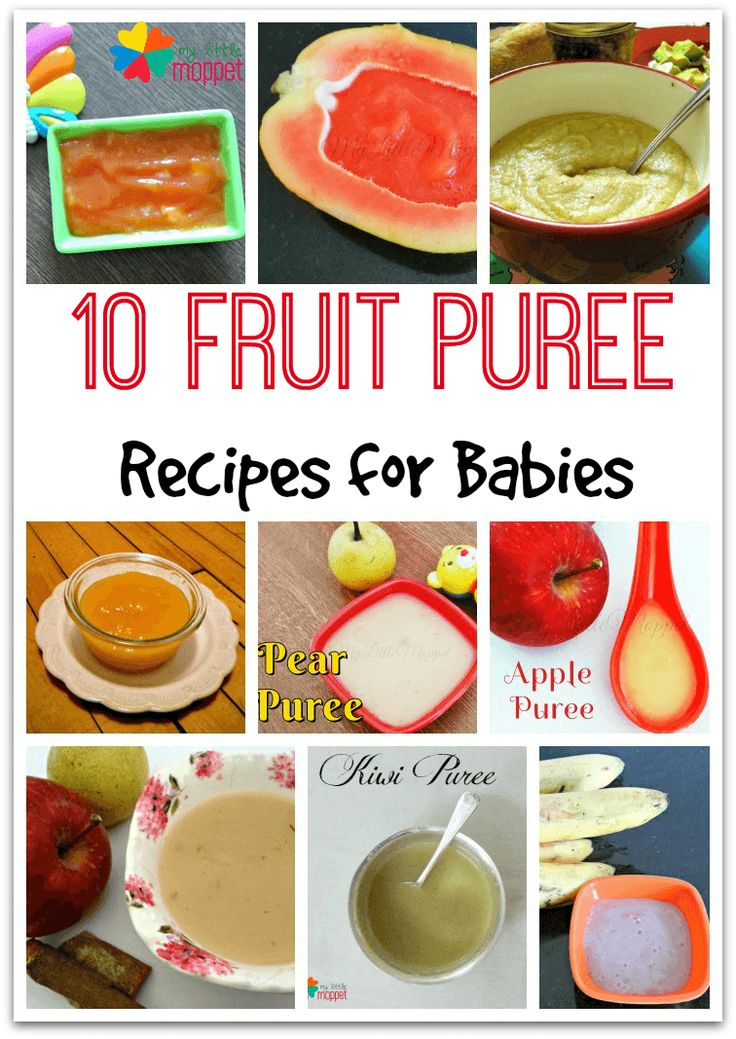 The easiest way is to use an ice cube tray, which has the added benefit of portioning out the baby food nicely.
The easiest way is to use an ice cube tray, which has the added benefit of portioning out the baby food nicely.
TIP: Any ice cube tray will do. You can use silicone ice cube trays if you prefer a non-plastic option.
Baby Food Storage Without An Ice Cube Tray
If you don’t have an ice cube tray or you’d just rather not use one, you can place a predetermined amount of baby food into a pint-size freezer bag. Remove as much air as possible, press flat, and seal. Place flat in the freezer to freeze. Then you can thaw the entire bag in the fridge overnight, or break off a portion of it to thaw.
How to Store Baby Food in the Freezer Step by Step
- Place baby food into each compartment of the ice cube tray, or fill as many as you need to with the amount of baby food you have.
- Cover (if your ice cube tray has a cover) and freezer for 4-6 hours or overnight.
- Pop out frozen cubes and transfer to freezer storage bags. Label as desired with the type of baby food and the date.
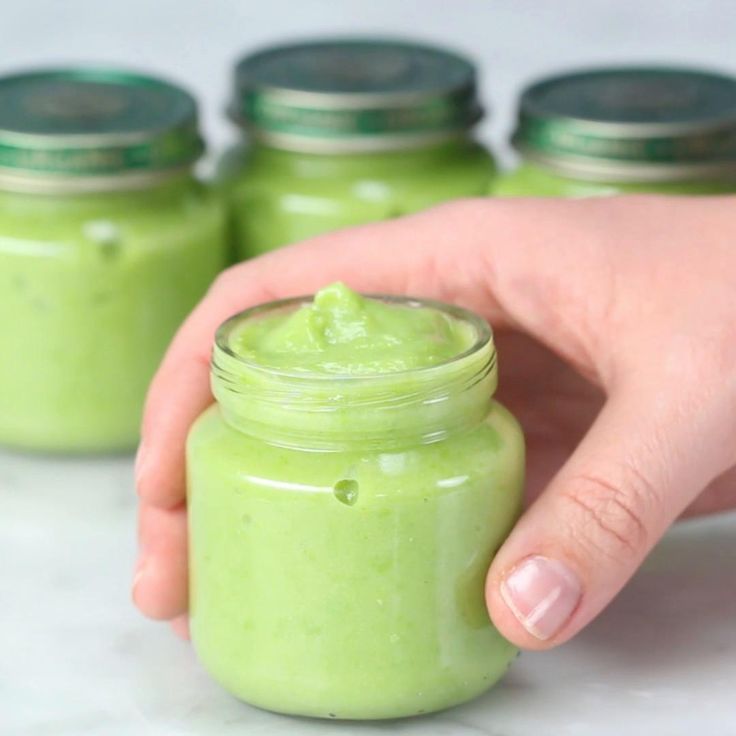
- Store in the freezer for up to 3 months.
TIP: I like to have a bag of sweet fruit purees and more savory vegetable purees to avoid having too many separate bags in the freezer at any given time. Then you can combine them into baby food combinations easily!
How to Thaw Baby Food
To thaw baby food, simply remove a cube (or as many as you need) and place into airtight containers. Thaw overnight in the fridge and serve. 1 cube may be plenty for a baby aged 6-7 months and older babies may enjoy two cubes.
Tips for the Best Baby Food Storage
- Keep fresh baby food in an airtight container for up to 3 days in the fridge.
- Use a regular ice cube tray to freeze, a silicone ice cube tray with a lid, or a small freezer bag with the contents pressed flat.
- Store frozen baby food in a freezer storage bag in the freezer for up to 3 months.
- To avoid freezer burn, try to remove as much air as possible from the storage bags.
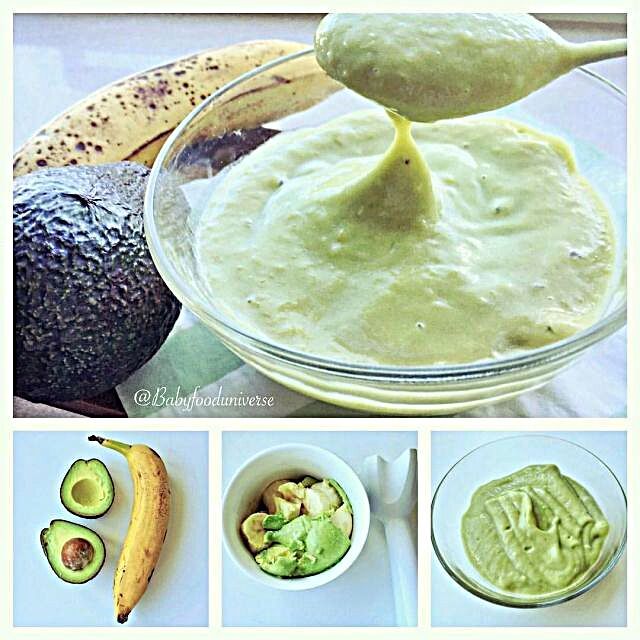
- Label your bags with the contents and the date.
- To thaw baby food, simply remove a cube (or as many as you need) and place into airtight containers. Thaw overnight in the fridge.
- Use leftover baby food to flavor yogurt, baby oatmeal, baby rice cereal, smoothies, or cottage cheese.
- See some of my favorite Baby Food Pouch recipes here for more ideas on how to serve your baby food!
I’d love to hear your feedback if you have another storage technique or container that you love, so please comment below!
Baby food without secrets
Children's meat and vegetable canned food is a "lifesaver" for every mother who has started complementary foods for her baby. Moreover, ready-made canned baby food products annually gain an increasing number of supporters among pediatricians, primarily due to the guaranteed control of state epidemiological surveillance over their production. Bribes and the assurance of manufacturers that canned food is made from high-quality, environmentally friendly products grown, harvested, processed and packaged in compliance with all safety standards.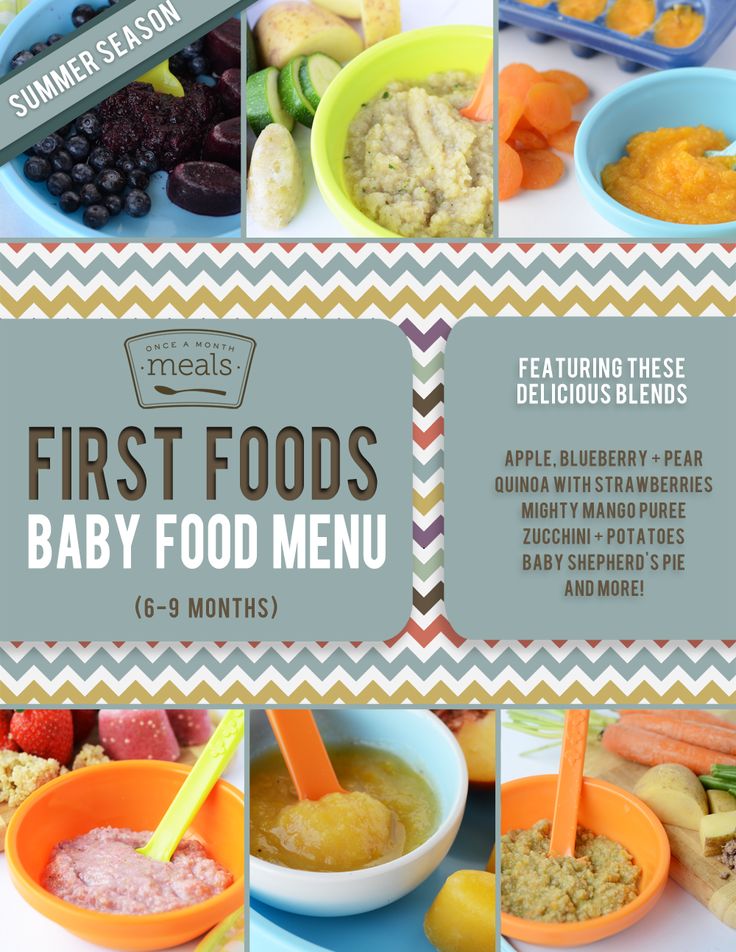 Is food from jars as healthy as advertised in commercials?
Is food from jars as healthy as advertised in commercials?
Test participants:
1. "Agusha" (vegetables and beef).2. "Grandma's basket" (beef and cauliflower) .3. "Gerber" (home-style beef with carrots).4. Nestle (vegetables with beef) and Semper (beef stew with vegetables).
The first part of consumer testing took place in the Igromania entertainment center, where parents of young children were invited. This part of the test was focused on their assessment of the appearance of the baby food packaging, its labeling and the organoleptic characteristics of the product (color, smell, taste). For the purity of the experiment, the participants were first offered the contents of the jars, and then the jars themselves to study the label.
According to young parents, 1st place was almost unanimously given to "Agusha". The texture of the product was rated as the best for children - neither runny nor thick. A six-month-old kid present at the tasting ate “Agusha” with pleasure, although he usually eats food from jars badly.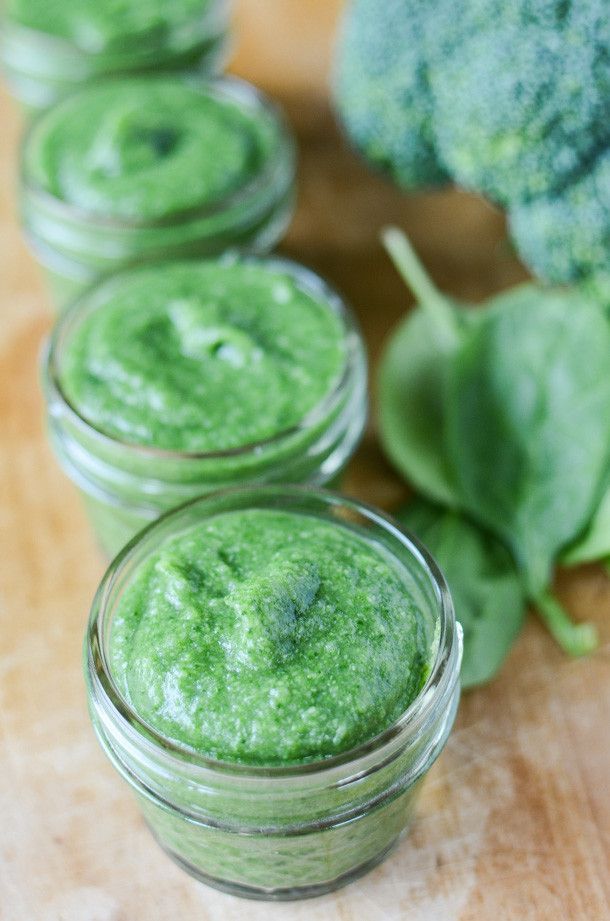
Olga: “More like vegetable stew with meat, not meat with vegetables. Meat purees are more pinkish, but here you can see from the color that there are mostly vegetables, and most of all - carrots.
2nd place went to Gerber food.
Irina: “The texture is like after a blender at home. It smells of meat, meat fibers come across and rice is felt. The child really liked it! Great for older kids! The consistency is larger and the meat is in pieces. There are spices in the texture and taste - pepper is added.
3rd place for Semper.
Tatyana: “This food, which is intended for children from 10 months old, has a texture for very adult children! All ingredients are reviewed. Everything is very large, and a lot of pepper! For an adult, this is very tasty, but it seems to us that for a 10-month-old baby, such an amount of salt and pepper in the diet is not acceptable.”
4th place - "Grandma's basket".
Ulyana: “By smell, you immediately feel that it contains cauliflower.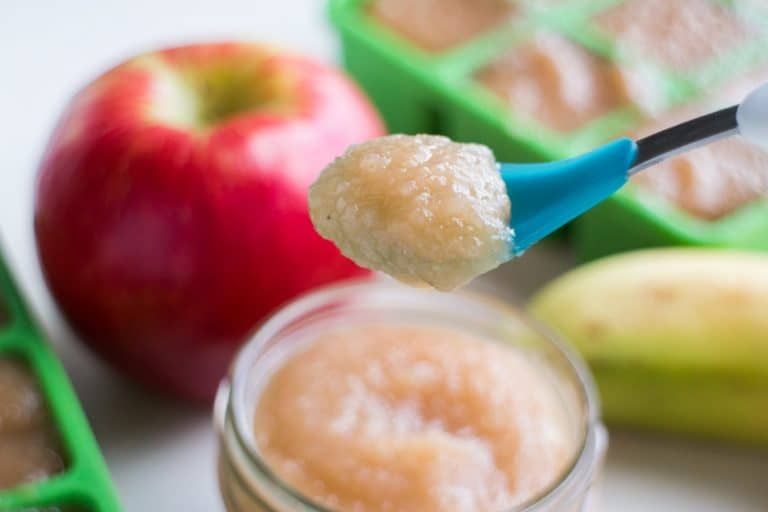 The child didn’t want to eat it just because of the smell!” Eugene: “I would understand the child if he refused it. The first was much tastier compared to the second. Almost no taste at all. The texture is more uniform compared to the first puree ("Agusha"). Grains of meat are felt more.
The child didn’t want to eat it just because of the smell!” Eugene: “I would understand the child if he refused it. The first was much tastier compared to the second. Almost no taste at all. The texture is more uniform compared to the first puree ("Agusha"). Grains of meat are felt more.
5th place for Nestle.
Oksana: “Absolutely no smell and taste. Barely perceptible smell of meat. And the taste is like that of "Grandma's Basket". Natalia: “The grains of meat are visible, but the taste is not felt. Yes, puree is very similar to the second one, only one is denser in texture, and this one is more watery. The most "none" of all."
As usual, we carried out the second part of our test at the Tomsk Regional Veterinary Laboratory, whose specialists assessed the nutritional value of the product, as well as the compliance of the contents of baby food jars with the current food safety standards.
Details
Vegetable-based canned food with meat are prepared meals for baby food, which include vegetable components and meat, which in most imported, and in recent years, domestic canned vegetable and meat products is no more than 10-15%.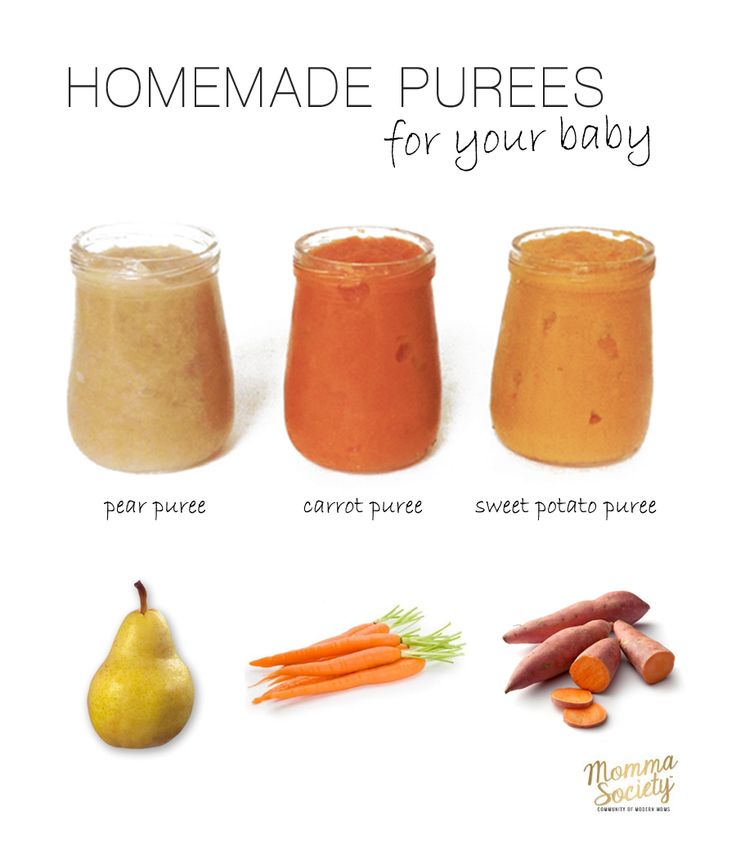
A product manufactured abroad and entering the Russian market must comply with the labeling requirements of national legislation, that is, have information on the label in Russian. A regulatory document that is not indicated on the product label may be indicated in the contract for its supply to Russia - this is a voluntary matter.
The first question related to safety standards arose already at the stage of studying the label. Only two jars out of five were marked with regulatory documents (TU), according to which the consumer can identify the product (“Agusha” and “Babushkino basket”). According to TU, one puree refers to a vegetable and meat product, the other to a meat and vegetable product, although they do not differ much in composition, since meat is listed second on the label after vegetables. But still, according to the classifier, the TU codes are different.
But other manufacturers of tested baby food did not indicate their regulatory documents, in accordance with which it is possible to identify the product, on the labels. Although it is for them that the consumer must determine whether the composition of the product, its name, purpose, guaranteed indicators of quality and safety, including the content of vitamins, amino acids and minerals, correspond to those indicated on the package.
Although it is for them that the consumer must determine whether the composition of the product, its name, purpose, guaranteed indicators of quality and safety, including the content of vitamins, amino acids and minerals, correspond to those indicated on the package.
Sterilization versus preservatives
The analysis of food safety carried out in the laboratory (heavy metals, nitrates, the presence of GMOs) did not reveal any deviations, as did the microbiology test in 2 selective samples. There are no complaints about these indicators for all 5 products, which was to be expected, because all samples are sterilized products. Sterilization takes place at a temperature of over 100 degrees, in particular, canned meat and vegetable products are sterilized at a temperature of 113 to 135 degrees for a certain time, which is set depending on the feedstock and production technology, the field of which in such a product all microorganisms and their spores are destroyed. This process is necessary due to the long shelf life of the product - 2 years. And since preservatives in the production of baby food are excluded, sterilization solves this problem.
This process is necessary due to the long shelf life of the product - 2 years. And since preservatives in the production of baby food are excluded, sterilization solves this problem.
Based on the fact that this is a baby food product, canned food should contain, for its intended purpose, a sufficient amount of proteins, amino acids, minerals with an optimal ratio of calcium, phosphorus, a sufficiently small amount of table salt, an optimal amount of fat in relation to proteins and a sufficient set of vitamins . This is a general requirement for infant formula for young children. The balance of the composition is achieved here due to the presence in the product of beef, leguminous crops, vegetable and butter oils, as well as starch for binding in order to avoid splitting canned food.
With long-term sterilization, all taste indicators of the product naturally decrease, starch and sugar are partially broken down, enzyme activity decreases, and some vitamins are destroyed.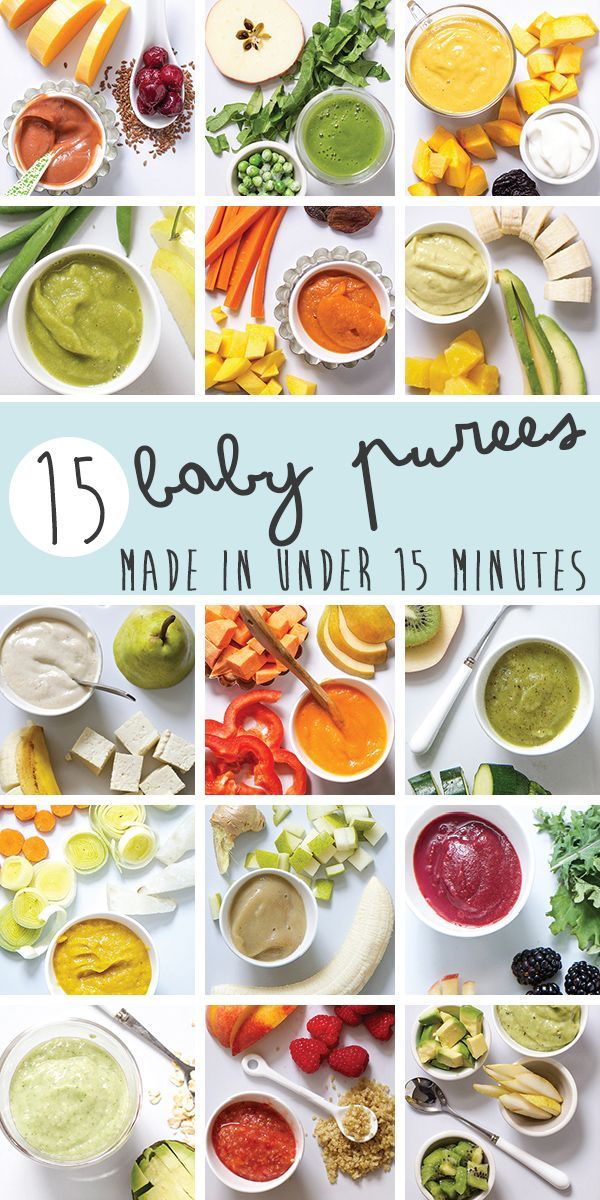 Also, as a result of prolonged sterilization, color, smell and taste may change. The most lively, fresh and nutritious canned food for children is one that has a shelf life of up to 1 year. If the period is longer (in all our samples it is 2 years), then such a product is focused more on saturation, and its vitamin and nutritional composition is very weak.
Also, as a result of prolonged sterilization, color, smell and taste may change. The most lively, fresh and nutritious canned food for children is one that has a shelf life of up to 1 year. If the period is longer (in all our samples it is 2 years), then such a product is focused more on saturation, and its vitamin and nutritional composition is very weak.
Details
Vitamins according to SanPinSanPin (sanitary norms and rules) regulates only a part of vitamins - these are B2 (riboflavin), B1 (thiamine), beta-carotene, PP, B3 (niacin). Vitamins A and C are not included in the list.
In accordance with the regulations, these vitamins do not have to be present in the product, moreover, vitamins are not allowed as an additional enrichment of the nutrition of young children. Vitamin balance should be achieved only through the components of the product. That is, in this case, it is young beef. And already to compensate for the amount of proteins, fats and carbohydrates, a composition is selected that optimizes the vitamin and mineral complex of the product.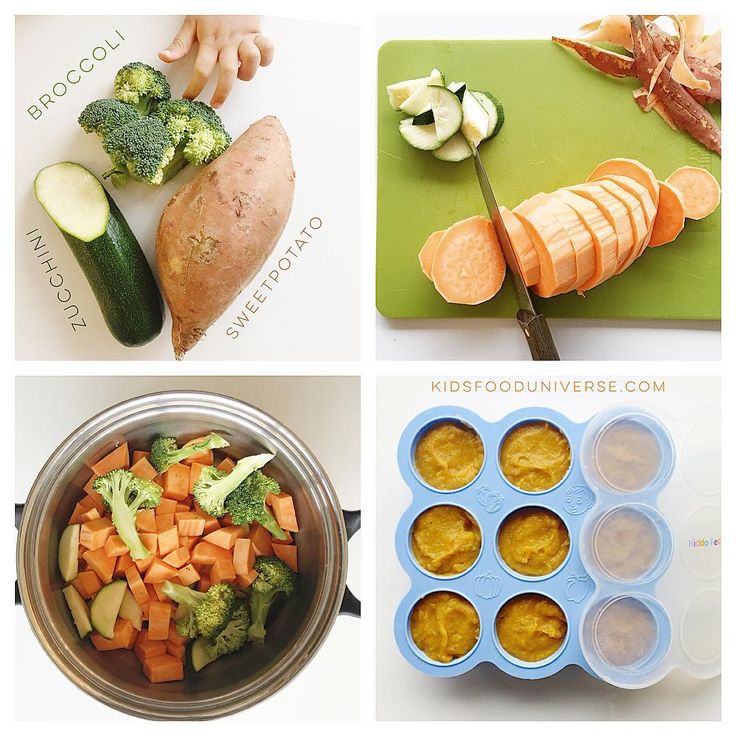 Speaking of vitamins, it should be noted that in natural products it is possible to detect them only in very small doses, and it is generally difficult to find them in processed and sterilized ones.
Speaking of vitamins, it should be noted that in natural products it is possible to detect them only in very small doses, and it is generally difficult to find them in processed and sterilized ones.
Nowhere on the labeling of our 5 samples is it indicated whether vitamins were added additionally. Nevertheless, we decided to check their presence in the puree. The direction of the search for vitamins was suggested by the composition of the product on the label, where, as a rule, carrot puree and cauliflower were listed first. Proceeding from this, a study on vitamins A and C was laid. Only vitamin A was found, which was present in all samples, and in “Agusha” it turned out to be the most. Vitamin C was not found in any of the submitted samples.
It is important to know that according to TU (technical specifications) a product is produced in cases where there is a need to deviate from GOST in technology, or to achieve the final result. According to SanPin, such a product will not cause any complaints, but the underestimation of consumer properties (taste, nutrition) is allowed in TU.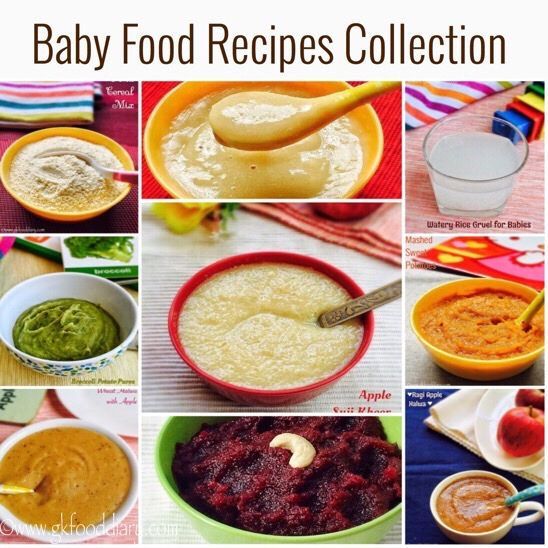 Therefore, if a product is produced according to specifications and at the same time, manufacturers declare on the packaging, for example, the huge benefits of its use for growth, brain development, immunity, and other things, the consumer should be interested in the reliability of this information. How does the manufacturer support such claims? In our case, not a single vitamin is indicated on the label.
Therefore, if a product is produced according to specifications and at the same time, manufacturers declare on the packaging, for example, the huge benefits of its use for growth, brain development, immunity, and other things, the consumer should be interested in the reliability of this information. How does the manufacturer support such claims? In our case, not a single vitamin is indicated on the label.
It turns out that some degree of growth, health improvement, etc. is achieved only due to the composition of the puree. For such indicators, the presence of at least calcium, phosphorus and vitamins in the diet is required. They may be there, but the data on the label absolutely does not imply and is not guaranteed exactly how much they are contained in the product. Thus, if the manufacturer writes about some favorable consequences for the body when using his products, then such information must be confirmed on the label. In our testing, the only thing that is guaranteed on all puree samples is that the product is non-GMO, free of dyes, flavors and preservatives, salt and gluten free.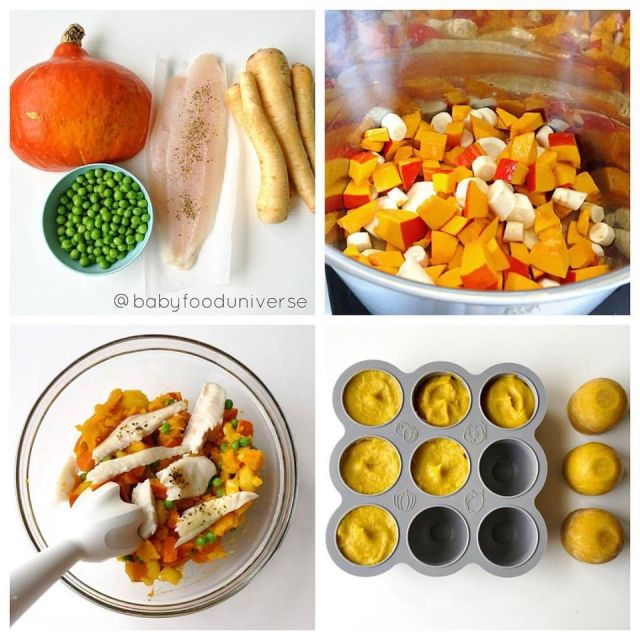
Label
The labels on food jars are quite informative, they indicate the manufacturer, expiration date. On the labels of imported samples there is a translation of information about the product in Russian.
In Russia, since February 2010, in Decree No. 982, certification of food products has been replaced by mandatory declaration. The mark of confirmation of conformity is obligatory, and it is applied on all jars submitted for the study!
In addition to mandatory declaration, baby food is also subject to mandatory state registration. Only 3 cans have a certificate of it (not on the label of "Agushi" and "Gerber"). This circumstance lowered their scores in the laboratory rating of the studied samples, since the certificate on the label is one of the indicators of confirming the safety of the product.
Lab Rating
In terms of nitrates (which are always found in vegetables and fruits) and vitamins, all the presented samples met the norms (see table), but, nevertheless, the highest nitrate indicator (albeit within acceptable limits) is in Agusha. Agusha has similarly high levels of vitamin A.
Agusha has similarly high levels of vitamin A.
If we build a rating of children's purees participating in testing, then 1st place is given to "Grandmother's basket" , where all the necessary parameters are indicated on the label: GOST, certificate of state registration of baby food, composition, presence of a vitamin-mineral complex, terms validity.
2nd place for Agushi. And if in consumer testing this puree took the 1st place, then in the laboratory it was not assigned leadership due to the lack of information on the state registration of baby food on the label.
It turns out that the product has not passed the state registration in the bodies of Rospotrebnadzor. It is likely that there is a registration, but it is not acceptable not to indicate such information on the label, especially when it comes to baby food. This is a violation. After all, the consumer must first of all receive all the data about the product from the label.
The rest of the samples in laboratory testing occupy the same positions, there is no clear distinction in places, all food is approximately the same in quality.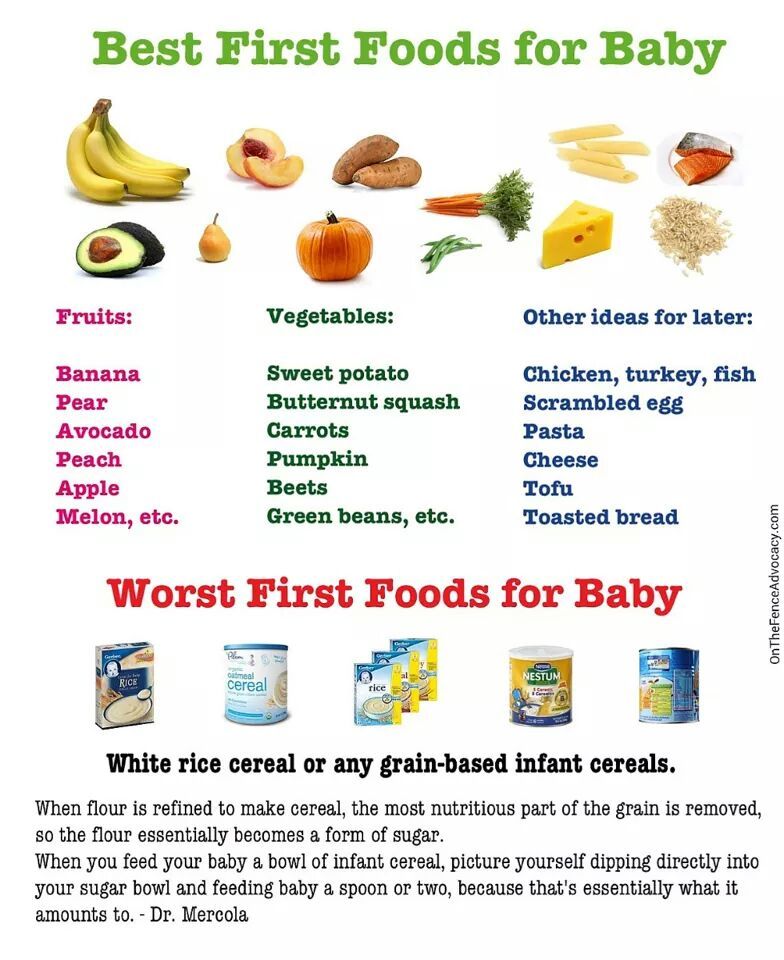
The main rule when choosing baby food is to pay attention to the composition of the product. It's enough. If vegetables are in the first place in the composition of the product, it is vegetable-meat puree, if meat, then it is meat-vegetable.
We express our gratitude for the active participation in the preparation of the material to the specialists of the OGU "Tomsk Regional Veterinary Laboratory", as well as the entertainment center "Igromaniya" for their assistance in organizing consumer testing.
Baby food at home: recipes, video
Growing up a little person is a delightful process that cannot but please the parents of the crumbs. However, the first feeling that mom and dad face when it comes time to introduce complementary foods into a child's diet is confusion.
Which food is the most healthy, hypoallergenic and delicious? Most often, the first "real" meal of the crumbs after mother's milk and formula is vegetable or fruit puree. The choice of baby food on store shelves is very wide - each manufacturer tries to convince the buyer that jars with beautiful labels contain only natural products, there are no dyes, sweeteners and other harmful additives. A variety of "meals" for babies in factory packaging marked "3+ months." does not guarantee the true usefulness of the product that is inside. Every mother understands that complementary foods prepared on her own, from natural products, are much better for her child.
The choice of baby food on store shelves is very wide - each manufacturer tries to convince the buyer that jars with beautiful labels contain only natural products, there are no dyes, sweeteners and other harmful additives. A variety of "meals" for babies in factory packaging marked "3+ months." does not guarantee the true usefulness of the product that is inside. Every mother understands that complementary foods prepared on her own, from natural products, are much better for her child.
Another advantage of making your own baby food is that you can choose the best ingredients, wash fruits, berries or vegetables thoroughly, peel them well and remove damaged parts. In addition, the parents of the crumbs themselves can choose the way - how best to cook baby food: food can not only be boiled, but also baked in the oven or cooked in a double boiler.
It is also important that home-made baby puree is much tastier, it will undoubtedly be useful for a growing body and will not cause allergies! Even the simplest children's dish, prepared by mom, keeps the warmth of caring hands and cannot be compared with expensive dishes from the store.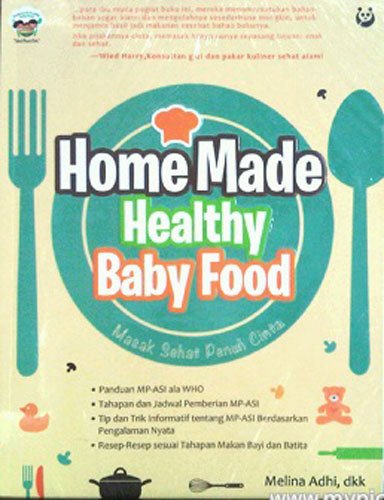
What should be the correct complementary foods for children? Of course, you should start with one ingredient (such purees are called one-component purees), then move on to more complex options. Experts emphasize that the most suitable product for the first "dish" is zucchini. Cauliflower can also be considered neutral. Gradually it will be possible to introduce carrots, pumpkins, potatoes, broccoli and green peas. At the first stage of the introduction of complementary foods, it is better to give preference to vegetable purees and switch to fruit purees when the child already treats “serious” food well.
The basic rules and principles of preparing high-quality baby food yourself:
- it is best to take fresh products for preparations: fruits from the tree, berries from the bush and vegetables from the garden are much healthier than those that have already been in the refrigerator for a week. If there are no seasonal vegetables at the time of preparation, the use of frozen foods is acceptable, but in this case, try to give preference to whole fruits - they retain the greatest amount of nutrients;
- only filtered water should be used for cooking vegetables;
- the preparation of baby food requires, if not separate dishes, then thoroughly washed.
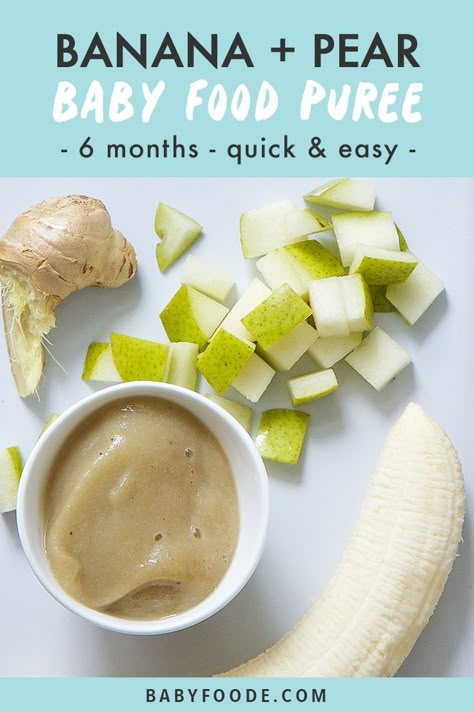 Do not, for example, cut vegetables on a meat board. If there is a dog or cat in the house, then you need to restrict her access to the kitchen when food is being prepared;
Do not, for example, cut vegetables on a meat board. If there is a dog or cat in the house, then you need to restrict her access to the kitchen when food is being prepared; - It is not recommended to use vegetables and fruits in the diet of infants, in which the content of chemical additives is consistently high. These often include watermelons and melons, beets, spinach and lettuce;
- It is better to soak vegetables purchased on the market with water before cooking: put carrots, potatoes, zucchini and cauliflower in filtered water for a couple of hours - this will remove nitrates;
- do not leave excess mashed potatoes for the next meal: the child should be given only freshly prepared food, and "yesterday's" mashed potatoes are best eaten by adults or given to pets;
- you can choose cream, boiled egg yolk, grated cheese or finely chopped dill as an additive to puree - this will diversify dishes for children from 8 months;
- try it! Children's food can and should be enjoyed by an adult.

There is another question that often worries parents: is it permissible to preserve baby puree and how to do it correctly? After all, such complementary foods for the developing body of a small child must be prepared daily for one or even two or three years: until the baby is ready to eat adult food from the common table. Not every mother has the time and opportunity to prepare baby puree daily, but you don’t want to buy food for the baby in the store. In addition, it is obvious that in the winter-spring period it is almost impossible to find fruits and vegetables grown without the addition of chemicals. The answer to the question is quite simple: the requirements for the conditions for preparing baby food are very strict (keeping the temperature, sterilizing jars, etc.), but using an autoclave solves all problems: all that is required is to load jars with blanks into the autoclave for 20 minutes and set temperature 120 degrees. After cooling, it is better to store baby food in a dark, cool place for about 12 months, daily delighting the child with homemade homemade food.
Pumpkin puree: tender and aromatic
Pumpkin is a tasty vegetable that is good for babies. This fruit has a beneficial effect on digestion, is well absorbed by the child's body and is rich in various vitamins: A, C, B, B2, E, PP, T. In addition, the carotene content in pumpkin is 5 times higher than in carrots!
Baby pumpkin puree has a sweet taste, so the kids eat this dish with great pleasure. For preparations, it is better to buy small whole pumpkins, as they usually taste better than large ones and are easier to peel.
- Rinse pumpkin well under running water, peel, cut in half, remove seeds.
- Then it is necessary to cut the fruit into small cubes, place in a saucepan and cover with water. Cooking time after boiling - 20 minutes. You can also steam pumpkin: it will retain more nutrients with the same cooking time.
- The next step is to beat the cooked pumpkin with a blender until the consistency of a gentle puree. If the dish turned out to be thick, add water or milk (milk mixture).

- Vegetable oil and salt are added to pumpkin puree to taste, but these additives should be used with caution: only if they are acceptable for the age of the child.
For babies older than 8 months, pumpkin puree is supplemented with other fruits and vegetables, and also added to porridge.
Broccoli puree: simplicity and elegance
Broccoli is not just cabbage, but a storehouse of vitamins and microelements! Beautiful on the outside and fantastic on the inside - the high content of protein and vitamin C (there is more in broccoli than in citrus!) deserves special attention. There are many articles on the Internet about the benefits of broccoli, and preparing this product is not at all difficult.
To prepare this type of cabbage for baby food, you need to choose the highest quality product: the inflorescences must be unopened, green, moderately elastic.
- Broccoli should be washed, cut into pieces and boiled. Steaming will take 20 minutes, in water - faster: fresh cabbage should be boiled for a little more than 5 minutes, and frozen - at least 10.
 When cooking, do not pour a lot of water, it should only cover the vegetables a little.
When cooking, do not pour a lot of water, it should only cover the vegetables a little. - When the cabbage is cooked, take it out, transfer it to a blender bowl and grind to a puree state, add a little warm boiled water.
- Add salt and butter to taste.
Pear puree: a fragrant dessert
It's no secret that babies love fruit puree - almost all children like sweet dishes. The pear is a suitable option for the first one-component fruit food - a sweet fragrant fruit that has a high concentration of vitamins, stimulates digestion and almost never causes allergies.
If you want to cook a safe puree for your child at home, then it is best to choose green pears, these are the fruits that are considered to be the least allergenic.
- Fruit must be peeled, core removed with seeds, cut into cubes.
- Transfer the pear to a heavy-bottomed enamel saucepan, add a little water and simmer over low heat for 15-20 minutes.
- Then transfer to a blender bowl and puree until smooth.
 If the puree is too thick, add a little warm boiled water.
If the puree is too thick, add a little warm boiled water. - You can dilute the dish with milk or formula - it depends on the taste preferences of the baby.
The same recipe is used for applesauce. In the future, try to combine these two fruits in one dish.
Classic apple-zucchini puree
A good appetite of a baby pleases every mother, but little gourmets are often capricious, and it is not easy to please them. Zucchini and apple puree is a classic combination of products that will diversify the baby's menu already in the fifth or sixth month of life.
This complementary food contains only hypoallergenic products, has a positive effect on the functioning of the heart, and stimulates the strengthening of the immune system.
- Selected products should be thoroughly washed, peeled, core removed from apples.
- Cut zucchini and apples into cubes, put fruits in a cooking pot first - they should cook for 5 minutes longer, and then vegetables.
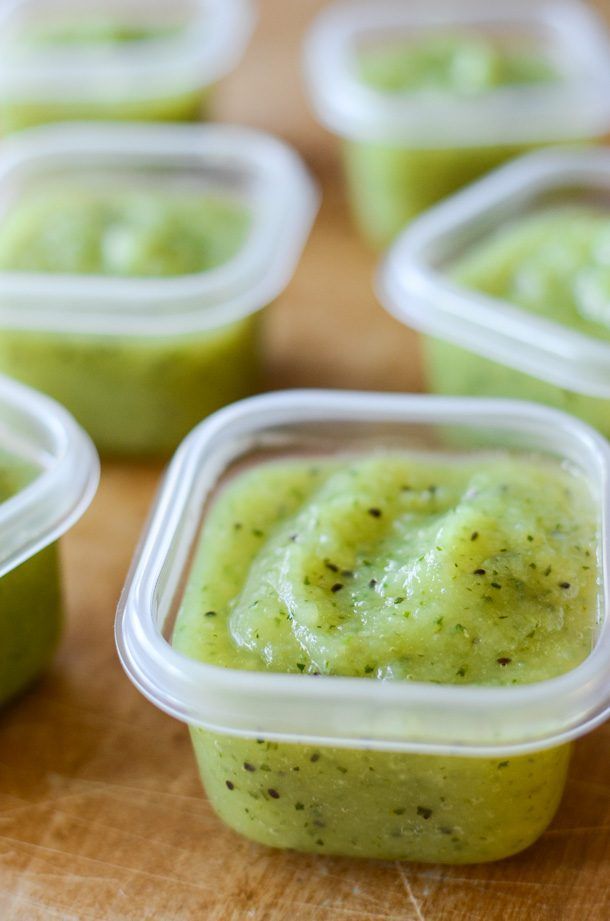 The total cooking time is 20 minutes.
The total cooking time is 20 minutes. - When the food is soft, puree it with a blender.
- To taste - dilute with water, add salt, oil.
This puree can be considered an independent dish for the little ones or become a delicious side dish for older kids.
Colorful carrot-potato puree
For many parents, carrots and potatoes are the simplest and most understandable type of complementary food for the baby. However, if you cook and serve standard products a little differently than usual, you can improve the traditional taste of a classic dish.
For baby puree, young potatoes should not be chosen - they contain a lot of starch. Carrots, on the contrary, it is better to buy young ones.
- Wash and peel the vegetables thoroughly and cut into cubes.
- It is better to steam the mashed potatoes and carrots, the vegetables should be boiled separately. Cook until tender, 20 minutes on average.
- Separately puree the vegetables in a blender, thinning with warm water if necessary.
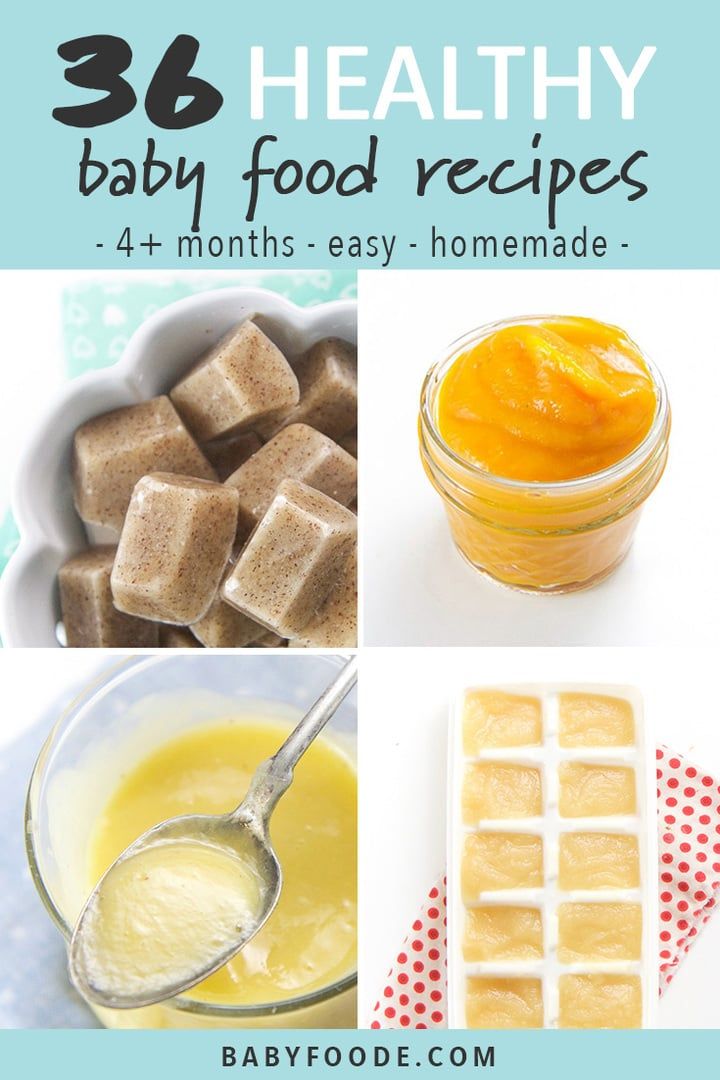
Both types of puree are beautifully placed on a plate without mixing: the child can decide for himself whether to mix food or eat separately.
Exotic variety: mango puree
Tropical fruits should not be offered to a small child before the age of 7-8 months and only if there was no allergy to other foods.
Mango is an aromatic fruit with an original pleasant taste. This fruit helps to overcome colds, reduce inflammation in the body, improve sleep and normalize the functioning of the stomach.
To feed the baby, ripened fruits should be selected - quite soft, yellow-red in color.
- Fruit should be peeled and pitted, cut into cubes.
- Raw mango put in a blender, puree, transfer to a heavy-bottomed saucepan and boil for a few minutes.
Older children may be offered uncooked mango puree. This fruit is completely independent - no need to add sugar or water!
Sweet pumpkin puree with apple
This puree is called sweet, since both pumpkin and apples are foods with sufficient sugar content.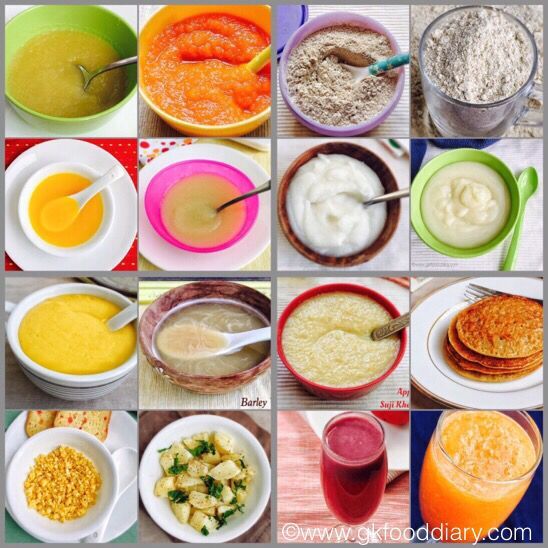 Such a dish is well suited as a dessert for children who already eat “serious” food well - vegetable purees and cereals.
Such a dish is well suited as a dessert for children who already eat “serious” food well - vegetable purees and cereals.
In addition, such complementary foods are a great option for the autumn-winter period: seasonal products contain enough choline, a lot of fiber, natural proteins and vitamins (groups A, B, C, E, etc.), zinc, sodium, calcium and only!
- Peel the pumpkin and apples, remove the skin and seeds, cut into cubes and send to the steamer.
- Cook for about 20 minutes until the food is soft. Then place them in a blender bowl, add raisins and chop. If the child chews well, mash everything with a fork, and leave the raisins whole.
Hearty puree with celery and turkey
For older kids, meat is added to vegetable dishes - turkey fillet is an excellent option for developing a child's taste preferences. Appetizing and fragrant meat puree includes only three ingredients: celery root, turkey fillet, butter.
The proportion of meat and celery should be approximately 10:1, the amount of butter to your taste.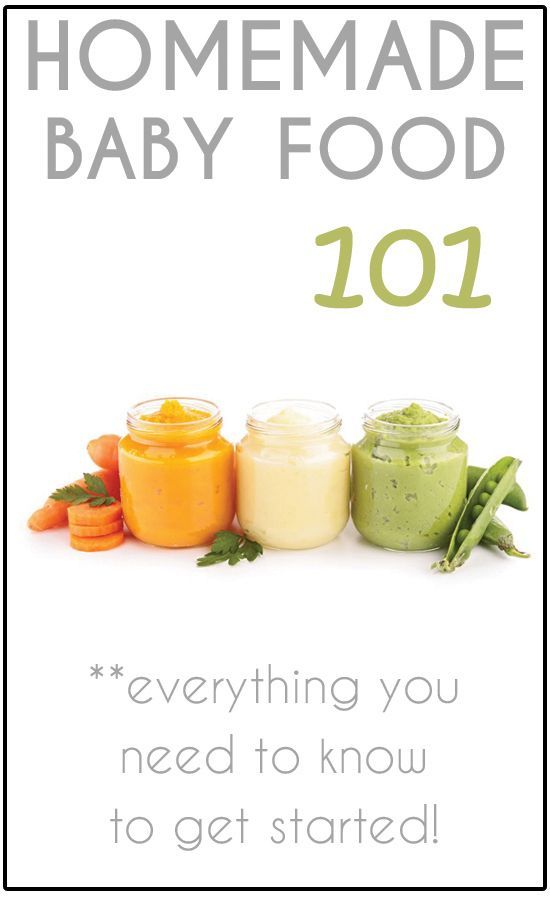
- Turkey fillets must be boiled in the "second stock" for about 20 minutes after boiling.
- Wash, peel and cut the celery root into cubes and put into the boiling broth 10 minutes before it is done.
- After cooking, puree the turkey and celery with a blender until smooth, adding stock if necessary.
- Salt to taste and add oil. For one children's serving, 3-5 grams of butter is enough.
A child from early childhood will begin to get used to full-fledged homemade food without the addition of preservatives and harmful components, and will grow up healthy and strong. In summer and autumn, parents can make preparations: prepare potatoes, carrots, beets, pumpkins and apples for storage (these products are stored for a long time - they do not need to be frozen), freeze berries and seasonal fruits, or roll ready-made mashed potatoes into jars! Homemade baby food without unnecessary flavor enhancers and salt is the best complementary food, warmed by mom's love.